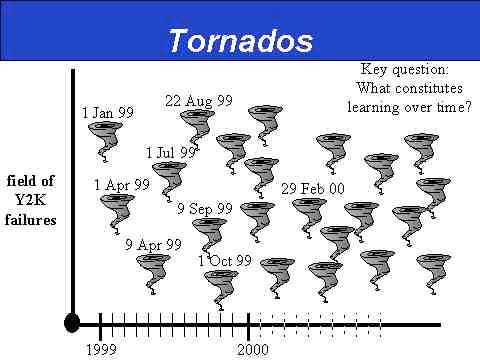I love to do scenario-based planning regarding future unknowns, the whole purpose being to eliminate shock (I had no idea it could be like this!) and reduce it to mere surprise (Oh! It finally happened!).
I have led a lot of scenario-based simulations over the years, both F2F enclaves (Delphi Method) and those involving masses of experts online. I consider scenario-based planning (alternative scenarios) to be my favorite and best thinking-ahead, broad-framing toolkit. It is what I want Throughline’s Broad Framing Initiative to be mostly about in exploring things like the Military Singularity, or China’s Quantum Grand Strategy, or what a US grand strategy on climate change would look like.
[NOTE: I had to search for the links just above within the platforms in question because when I searched via Google, the links were bad — presumably a lingering effect of CrowdStrike hitting media sites.]
I ran a big, scenario-driven series of table-top exercises (TTXs) in the 18 months leading up to Y2K. It was my first big assignment at the Naval War College (NWC) and I hated it — at first. I felt like I got this big messy bunch of nothing because I was the most recent hire, and I was accurate in that assessment.
But the guy who gave it to me, who thought up the entire project, was Art Cebrowski, then a three-star admiral known as the “father of net-centric warfare.” [I would later go to work for him as a Special Assistance for Strategic Futures in his just-opened Office of Force Transformation under SECDEF Rumsfeld.]
Art had just joined the NWC as president, me as a research professor. Art was convinced the world would learn plenty about itself from the anticipation of, and preparation for, Y2K.
He was correct in that assessment. I myself got a world of education in those workshops.
[Below, forgive the “cutting edge” PPT6 edition slides.]
In December 1998, we ran a scenario-building workshop at NWC, which got us the chart highlighted above in now-YouTube-hosted big brief I delivered all over the country and to just about all of the major military commands and major USG agencies — to include the White House.
Once we had a framework (Mania, Countdown, Onset, Unfolding, Peak, Exit), we ran a second workshop at Salve Regina U. the next month (Jan 1999) to fill it in. In both instances, we had a wide variety of experts from across the government, industry, and the national security world.
Then, in March 1999, we ran a national-security focused version of the TTX at my old stomping grounds, the Center for Naval Analyses, and then we ended with a financial system variant (hosted by Cantor Fitzgerald) in May at World Trade Center 1 on the 105th-floor Windows on the World restaurant (the first of several there for me prior to 9/11 ending my work at NWC, for all practical purposes).
In all, we had several dozen participants across the four workshops, all of which were a blast in intellectual terms.
Our focus began with what military bases might face.
There was what happened inside the “wire,” what unfolded in the wider world, and how those outside and inside worlds might interact.
Art’s big interest was in the rules that would result from the event, however easy or bad it turned out to be.
It was Art’s and my sense that Y2K was going to end up teaching us a great deal about what was then being described as the “new economy” driven by IT advances and globalization.
We developed four “onset” models based off of two questions: how big and bad and interconnected the Y2K breakdown versus how robust or vulnerable our systems ended up being.
We then developed weather storm analogies for the four scenarios:
First, the robust and discrete combo:
Maybe your “house” was destroyed but your neighbor’s was not, thus the random impact feel.
Second, the discrete meets the vulnerable:
When these storms hit shore, they set off cascading failures across industries particularly vulnerable to the whole effect.
Third, the robust system meets the sustained Y2K onslaught:
So, an overall strong system that is nonetheless submerged across low-lying areas, whatever those ended up being.
Finally, the worst case of being vulnerable and suffering a sustained onslaught:
Keep reading with a 7-day free trial
Subscribe to Thomas P.M. Barnett’s Global Throughlines to keep reading this post and get 7 days of free access to the full post archives.













